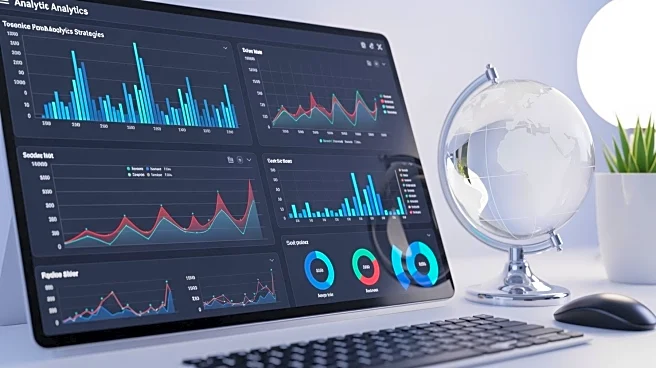What's Happening?
As the fourth quarter of 2025 begins, nonprofits are entering a crucial period for fundraising, with November and December being pivotal months for donor contributions. Historically, 30%-40% of annual donations are made during these months. To stand out
in this competitive environment, nonprofits are increasingly focusing on data-driven strategies to personalize donor engagement. By leveraging donor insights and giving histories, organizations aim to create campaigns that resonate on a personal level, highlighting tangible outcomes and inspiring collective action. This approach involves tailoring messages to donors based on their past contributions and potential, thereby making the donor feel recognized and empowered. Transparency in outcomes is also emphasized, with nonprofits showing donors the direct impact of their contributions, thus fostering trust and engagement.
Why It's Important?
The shift towards data-driven personalization in fundraising is significant as it aligns with the evolving expectations of donors, particularly Millennials and GenX, who are becoming more prominent in the philanthropic landscape. These cohorts are not only financially independent but also seek to be part of something larger than themselves. By framing donations as transformative rather than transactional, nonprofits can build long-term relationships with donors. This approach not only helps in achieving immediate fundraising goals but also lays the foundation for sustained donor engagement. The emphasis on transparency and personalized communication can enhance donor trust and commitment, crucial for the long-term viability of nonprofit organizations.
What's Next?
Nonprofits are expected to continue refining their data-driven strategies to further personalize donor engagement. As the year-end approaches, organizations will likely increase their efforts to demonstrate the impact of donations through real-time dashboards and personalized reports. This transparency is anticipated to build trust and encourage more significant contributions. Additionally, nonprofits may focus on converting one-time donors into long-term supporters by following up with detailed reports on how their contributions have made a difference. This strategy aims to close the loop on donor engagement and foster deeper connections, ensuring sustained support in the future.
Beyond the Headlines
The move towards data-driven fundraising reflects broader trends in the nonprofit sector, where organizations are increasingly adopting business-like strategies to achieve their goals. This shift highlights the growing importance of technology and data analytics in philanthropy, enabling nonprofits to operate more efficiently and effectively. Moreover, the focus on transparency and personalized communication may influence donor expectations across the sector, prompting other organizations to adopt similar practices. This could lead to a more engaged and informed donor base, ultimately benefiting the nonprofit ecosystem as a whole.













